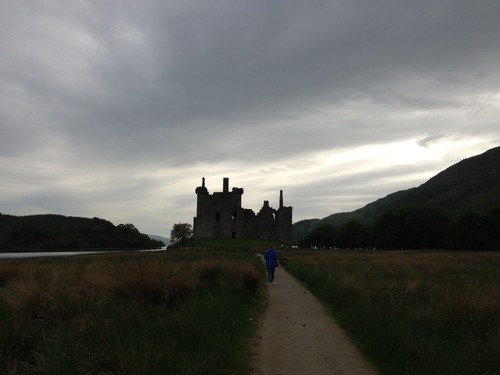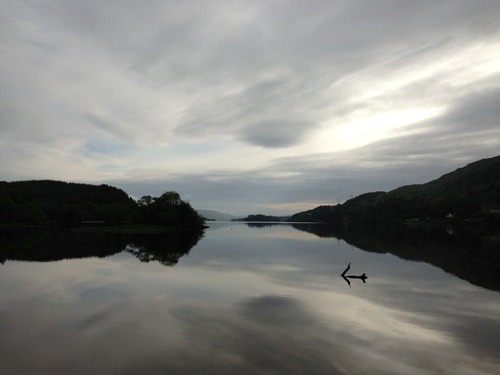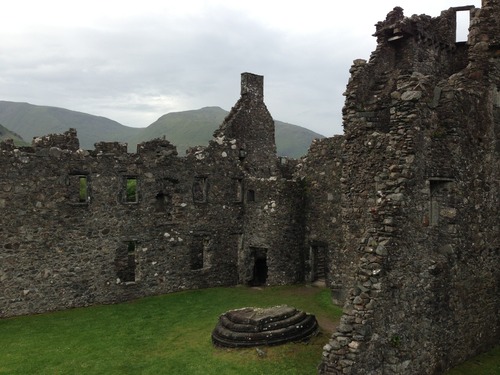This is an archived article that was published on sltrib.com in 2013, and information in the article may be outdated. It is provided only for personal research purposes and may not be reprinted.
The unmarked dirt road led off to the right.
I had been walking along the highway for about 30 minutes after leaving the Loch Awe train station when I first glimpsed the road, marked by two white posts but no signs indicating where it led. Stepping off the highway, I followed the road down into the trees, passed a gravely lot and finally emerged onto a grassy plain filled with sheep. I had arrived at the isthmus leading to crumbling specter of Kilchurn Castle.
Begun in 1449 by the Campbell clan, Kilchurn is a five-story ruin that elicits gasps from train passengers when they pass it in a long, dramatic arc around the valley. It's also one of the many attractions on the more northern section of Scotland's West Highland Line that have made it an acclaimed rail journey. The area is so beautiful that many visitors simply ride the train up and back for the views.
For travelers with an abundance of time, the rail journey is unquestionably worth doing.
But what about everyone else, particularly American visitors with limited time or tight budgets? Is riding the West Highland Line worth it?
After spending several days riding the line, I'd say doing the entire trip itself probably isn't worth doing for hurried travelers. Instead, I'd recommend focusing on the destinations rather than the views themselves. That's because a surprising amount of terrain is obscured by trees growing beside the tracks, so the ride often feels like a more pedestrian rail trip. Moreover, the landscape may seem a bit less wild to Americans from the western U.S. than the literature and chatter would indicate. One of the big things to see, for example, is the ostensibly "desolate" Rannoch Moor.
The area is indeed desolate in the context of its neighboring regions. But with an apparent abundance of plants and water it seemed like a veritable rainforest compared to much of Utah, Nevada, Arizona and other parts of the parched West.
None of which is to say that the West Highland Line isn't beautiful or wild. It is. But for Americans accustomed to a different and, I think, more extreme brand of desolation, the main appeal may not be "wilderness" so much as the long and storied convergence of nature and civilization. That's what we don't have at home, so it's immediately what stands out.
The result is that I'd advise American travelers to use the line as transport; choose destinations and don't bother trying to squeeze in the entire thing.
Oban and the surrounding countryside is one of those destinations and makes a good one- or two-day stop. Kilchurn Castle is another and probably works best as an afternoon day walk between trains.
—
Kilchurn Castle • Kilchurn sits at the far end of a finger of land in Loch Awe [link 3], perched on a rock mound and looking out over the water. From the dirt path I could see it in the distance, five stories of ruined stone framed by the distant mountains and the glassy water.
Surrounded by water on three sides — or all sides before 1817 when the water level in the loch was lowered — the castle occupies an easily defensible position.
But today, the spot is more cinematic than strategic. From the gently curving path leading to the entrance, the castle seemed to grow higher and higher, jagged chimneys and tattered towers dwarfing me as I marched up the close-grazed grass near the door.
Like other remote, infrequently visited castles, Kilchurn has a few informative plaques describing its history but no admission fee or formal tourist infrastructure. Once inside, I was free to roam what had been military barracks and the bedrooms of long-dead lords. I peered out of old pistol holes, watched birds skimming the surface of the loch and squeezed through narrow staircases.
After a time the sun set, leaving the water alight with streaks of red and yellow. In the fading light I saw a man approaching, a dog trotting beside him; it was my cue to leave this exercise in solitude to the next traveler. —
If you go
Kilchurn Castle • Three trains pass Loch Awe daily, leaving enough time to arrive, walk to the castle and get back for the next train. To get to Kilchurn, turn right out of the train station onto the main highway. Walk along the road for about 30 minutes. Soon after going over the bridge there is a dirt road marked by two white posts. Turn right, then follow the dirt path to the castle.
Where to stay • Corrie Bank B&B has great breakfasts, but Loch Awe is just a few scattered buildings so book a day or two in advance if you plan to spend the night. Restaurant options are limited to non-existent; bring a picnic.
Also see • St. Conan's Kirk was built in an eclectic and romantic style between 1890 and 1930. The building notably bears some similarities to the Richardson Romanesque style, in which Salt Lake's City County building was also designed.









